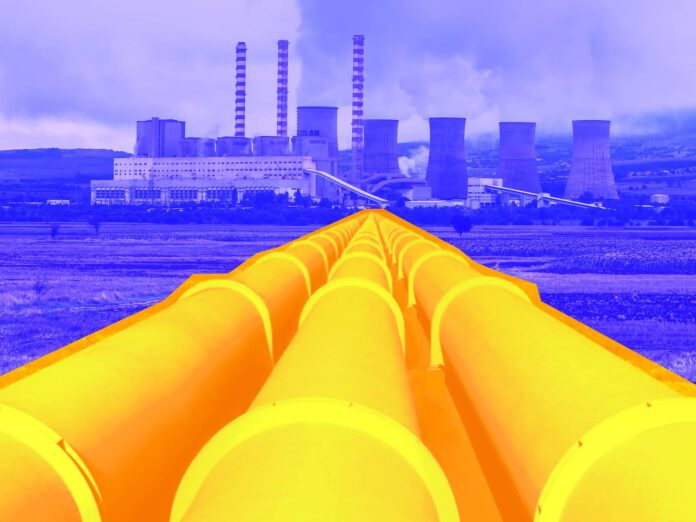How LoRaWAN Can Address Natural Gas Safety

First published by IoT for All:
Illustration: @ IoT for All
Approximately 50 percent of homes and commercial buildings in the U.S. use natural gas for their primary heat source and the operation of appliances such as stoves and water heaters. However, without the proper maintenance and safety systems, reliance on dated natural gas infrastructure can create a dangerous living environment. By the time a gas leak is reported, there is already a significant amount of gas that may have created a hazardous situation. According to the National Fire Protection Agency (NFPA), local fire departments responded to an average of 4,200 U.S. home fires per year that had started with the ignition of natural gas. These fires cause an average of 40 civilian deaths, 140 civilian injuries, and $54 million in direct property damage.
Additionally, methane leaks in urban areas have been reported to be more than two times those estimated by the US Environmental Protection Agency (EPA). A 2021 study by the National Oceanic and Atmospheric Administration (NOAA) found that natural gas emissions above Boston were approximately six times higher than initial estimates. More than half of those emissions were found to be leaks from “end uses,” which include compression stations, meters, boilers, furnaces, and other appliances, rather than strictly from pipelines. To address safety and environmental issues, utility providers and municipalities must first identify where and when leaks are occurring so they can fix the situation before it becomes dangerous.
Legislation for Safety
One proposed solution for detecting leaks has come with residential methane detectors (RMDs), which are widely available. But adoption of these detectors has been minimal because they are not required by law. However, many states and municipalities are working to change that. Industry stakeholders in collaboration with municipalities and utility providers are working to educate and inform legislators on the need for laws requiring natural gas detection in commercial and residential properties.
Following a 2015 gas explosion in Manhattan, for example, The City of New York passed a law requiring the mandatory installation of natural gas alarms in residential properties. In 2021, Maine became the first state in the U.S. to sign into law a gas safety bill, and many other states including Massachusetts, Tennessee, Illinois, New Jersey, and New York are in the process of passing similar laws requiring RMDs in residential properties.
Cross-Sector Collaboration
Given the inherent overlap of the infrastructure and service delivery models, the cross-sector collaboration between utilities is also starting to change the way they contribute to the success of national and global environmental, sustainability, and safety initiatives. The water market, for example, has been an early adopter of LoRaWAN networks and LoRaWAN sensor-enabled devices for Advanced Metering Infrastructure (AMI) and water management solutions. The success achieved by water utilities has proven LoRaWAN networks and devices to be robust, secure, and scalable for other markets like natural gas.
Following the success of water utility AMI, natural gas utilities are now contributing to the development and piloting of solutions based on LoRaWAN technology to create the foundation needed to support a multitude of remote monitoring, infrastructure management, and safety applications.
Monitoring Solutions: Leak & Disaster Prevention
Moving forward, in addition to metering and general infrastructure monitoring, natural gas utilities are working toward ensuring public safety by adding state-of-the-art valve shut-off capabilities to sensing and alerting systems. These capabilities will allow utilities to gain complete awareness and control of their gas distribution systems, including automating the secure shutdown of single or multiple valves before a gas leak becomes a safety issue.
There are four main components required of a comprehensive Natural Gas Smart Shutoff Safety System for residential and commercial buildings:
- Smart Sensors: These can include methane detectors (RMD), temperature (fire) sensors, and water sensors to detect water levels near gas-operated appliances.
- Smart Shutoff Valve: This can be either a stand-alone valve or an integrated meter valve.
- Communication: All safety systems require some form of connectivity that is fit for the power and operational requirements of remote sensor devices and communication backhaul.
- User Interface Software: This allows the gas utility to view hazards detected by the smart sensors so that corrective actions can be taken, including shutting off the natural gas supply to a residence or commercial building.
LoRaWAN for Reliable Connectivity
Providing reliable connectivity to the sensor devices is critical to ensuring that gas is being safely used. Newer wireless technologies like LoRaWAN enable low-cost, multi-year battery-powered methane and fire sensors to transmit alerts to customers and gas utilities so they can immediately respond to potential danger. Once fully established, these automated systems will provide residential and commercial building owners with improved safety and reduce the risk of life-threatening incidents by detecting hazards and shutting off the flow of gas. An infrastructure modernization program has many moving parts. With LoRaWAN wireless network coverage available in and around residential and commercial properties, it opens the door for a host of new remote monitoring applications to detect other costly property nuisances like water leaks, rodents, HVAC operation, and more.
Addressing Longstanding Issues
New infrastructure sensing solutions based on LoRaWAN technology can help address longstanding natural gas distribution and safety issues. Utilities and gas technology solution providers are collaborating to add state-of-the-art valve shut-off capabilities to sensing and alerting systems, improving the response time to address dangerous gas leaks. Proposed legislation requiring residential methane detectors (RMDs) in homes and commercial buildings can help mitigate natural gas dangers and address the adverse effects gas leaks have on the environment.
